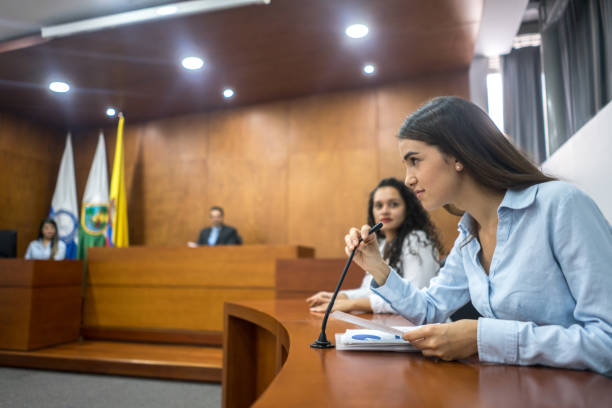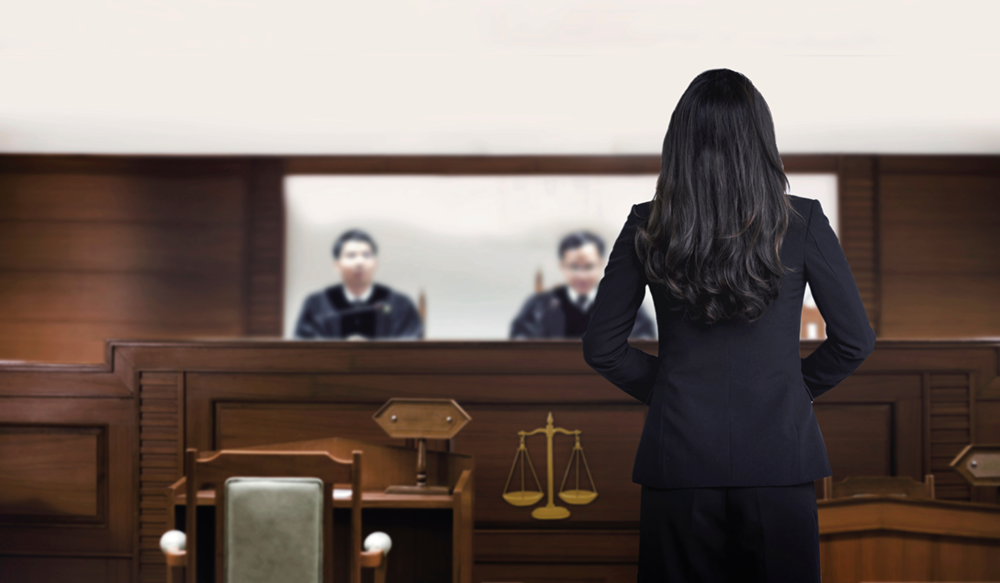Navigating the Intricacies of Trial Presentations: Tips for Seamless Distribution and Engaging Arguments
In the world of lawful procedures, the art of trial presentation stands as a critical component of success. As attorneys navigate the intricate internet of court characteristics, the capability to flawlessly deliver debates and evidence while captivating the court's attention ends up being paramount. The complexities inherent in test presentations need a delicate balance of method, ability, and finesse. By developing methods that make sure a refined delivery and crafting engaging debates that resonate with the audience, attorneys can substantially boost their campaigning for. In a world where persuasion rules supreme, grasping the intricacies of trial presentations is not merely an option but a necessity for those looking for to prevail in the courtroom.

Understanding Trial Goals
To effectively navigate a test, it is crucial to have a clear understanding of the purposes that need to be attained. Prior to entering the court room, legal teams need to define their objectives and preferred results. These purposes function as assisting principles throughout the test, forming approaches and affecting decision-making processes.
Comprehending trial purposes involves an extensive evaluation of the instance, lawful criteria, and the customer's ideal passions. Trial Presentations. It requires a precise examination of the realities, determining crucial concerns, and anticipating prospective obstacles. By setting quantifiable and details goals, attorneys can customize their discussions and debates to straighten with the desired results
Moreover, a clear understanding of trial objectives makes it possible for lawful teams to prioritize proof, witnesses, and legal arguments properly. It enables for the growth of a coherent narrative that resonates with the discretionary, reinforcing the total case presentation.

Organizing Evidence Successfully
Having a clear understanding of trial objectives lays the structure for arranging proof properly in lawful proceedings - Trial Presentations. By lining up the presentation of proof with the wanted results of the trial, legal teams can enhance their debates and boost their persuasiveness. One essential aspect of organizing proof is classification. Grouping proof based upon motifs or significance to particular lawful elements can help enhance the discussion and make intricate info much more digestible for the judge or jury.
An additional crucial element in arranging proof properly is developing a rational flow. Offering proof in a meaningful and consecutive fashion can assist build an engaging story that supports the lawful debates being made. In addition, making use of visual help such as timelines, charts, or charts can further enhance the company of proof and help in making clear complicated partnerships or sequences of occasions.
Furthermore, making certain that all evidence presented is relevant and admissible to the instance is necessary. Irrelevant or inadmissible evidence can diminish the strength of the argument and potentially hurt the credibility of today event. A precise review and selection process ought to be undertaken to include only the most lawfully audio and impactful evidence in the test presentation.
Crafting Convincing Narratives
Crafting engaging stories plays an essential role in offering convincing arguments during lawful procedures. When constructing a story for a trial discussion, it is necessary to develop a clear storyline that highlights essential points and connects them in a systematic fashion. By weaving together evidence, testimony, and legal disagreements right into a convincing and natural narrative, legal experts can properly advocate for their customers and raise the probability of a desirable result in the courtroom.
Understanding Aesthetic Aids
Reliable use of visual help is key to boosting the effect and quality of test discussions. Visual help, when utilized tactically, have the power to simplify complicated info, enhance vital factors, and leave a long lasting perception on the discretionary. To grasp visual aids in trial discussions, it is crucial to guarantee that they are clear, concise, and pertinent to the debates being made.
When integrating visual help, such as charts, graphs, timelines, or photos, right into a test discussion, it is vital to maintain them aesthetically appealing yet expert. The visuals need to match the verbal debates, offering a visual representation of the info being reviewed without overwhelming the audience with unnecessary details.
In addition, exercising with the visual help in advance is necessary to guarantee a seamless distribution throughout the trial. you could try here Familiarizing oneself with the material, transitions, and timings of each visual aid can aid maintain the flow of the discussion and stop technical problems that may develop.
Delivering Impactful Closing Arguments
A compelling closing disagreement offers as the conclusion of a test presentation, enveloping the core narrative and persuading the court and court in the direction of a desirable decision. Begin by detailing the major disagreements that support your customer's position, highlighting why the evidence presented throughout the trial sustains your story.
Furthermore, integrating sob story can even more reinforce your closing argument. By connecting and humanizing the situation on click an individual degree with the decision-makers, you can stimulate compassion and understanding, affecting their perception of the truths offered. In addition, stating the lawful standards that have to be fulfilled for a positive ruling can enhance the legitimacy of your placement. Inevitably, a well-crafted closing argument ought to leave an enduring impact, compelling the discretionary to regulation in your client's favor. he has a good point
Conclusion
To conclude, understanding trial presentations includes understanding purposes, arranging evidence, crafting narratives, making use of aesthetic aids, and supplying impactful closing disagreements. By carrying out these techniques effectively, legal representatives can provide their situation flawlessly and make engaging disagreements in the court room. It is important to browse the complexities of trial presentations with accuracy and ability to achieve success in legal proceedings.
By lining up the discussion of evidence with the wanted results of the test, lawful teams can enhance their disagreements and boost their persuasiveness (Trial Presentations). To grasp visual aids in trial discussions, it is important to make sure that they are clear, concise, and appropriate to the debates being made
An engaging closing argument offers as the culmination of a trial presentation, encapsulating the core story and persuading the judge and jury towards a desirable decision. Begin by laying out the primary arguments that support your client's setting, emphasizing why the proof provided throughout the trial sustains your narrative.In verdict, grasping test presentations entails comprehending objectives, arranging evidence, crafting narratives, using visual aids, and supplying impactful closing disagreements.